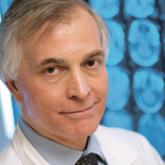Conference Coverage

How to Diagnose and Treat Rare Movement Disorders
MIAMI—When evaluating a patient with a movement disorder that seems to be rare, neurologists should employ their clinical...

VANCOUVER—Researchers’ understanding of genetic causes of movement disorders is advancing rapidly. “The ability to generate data has almost surpassed our ability to understand and use it in the clinic,” said Buz Jinnah, MD, PhD, at the 21st International Congress of Parkinson’s Disease and Movement Disorders.
A recent study underscores the swift evolution of the field. Investigators compared the diagnostic ability of a dystonia gene panel with that of experts who formulated a diagnostic workup without the use of gene panel analysis. In a cohort of 61 patients, the gene panel led to more genetic diagnoses and did so faster and at less cost on average, compared with experts using traditional methods.
Neurologists face practical questions, such as which patients need genetic testing, which tests they should perform, and how the results influence clinical management, said Dr. Jinnah, Professor of Neurology, Human Genetics, and Pediatrics at Emory University School of Medicine in Atlanta. Neurologists once considered Wilson’s disease to have the only genetic cause of movement disorders that significantly changed treatment. Now, researchers have identified more than 30 genetic movement disorders with specific, effective treatments.
Not all patients need genetic testing. In some cases, the need for genetic testing is obvious, but in other cases, it is not so clear, Dr. Jinnah said. Certain features increase suspicion for a genetic disorder, such as family history, unusually young age of onset, and combinations of features that fit a recognized syndrome.
Genetic testing also may be warranted in presumed acquired cases. “Methodical studies of these so-called acquired cases reveal a high proportion of genetic explanation for them,” he said. “We typically think of cerebral palsy as an acquired disorder…. But the studies are now showing that about a third of these cases have a genetic explanation.”
Single-gene sequencing, chromosomal microarray, and tests for deletions or insertions are available, as well as next-generation sequencing methods with broader reach. Next-generation techniques include gene panels that can test hundreds of genes associated with a disease, whole-exome sequencing, and whole-genome sequencing.
Experts tend to use one of three strategies to select which genetic test to perform. One approach entails identifying red flags—“telltale clinical features that point to a specific diagnosis or group of diagnoses,” said Dr. Jinnah.
Another approach involves pattern recognition. Syndromic combinations may lead a neurologist “straight to a single gene test to confirm the diagnosis” if a patient has a classic presentation of a genetic disease.
The third approach uses diagnostic algorithms. “Depending on the presence or absence of various clinical features … [an algorithm] tells you which gene or collection of genes you need to test for,” he said.
Each strategy has limitations, however. It is difficult to remember all of the red flags and syndromic patterns, and many disorders lack red flags. Atypical syndromes can be misleading, and atypical presentations that have been reported in the literature for decades “continue to surprise us,” Dr. Jinnah said. Researchers have published various diagnostic algorithms for dystonia, parkinsonism, and ataxia, and none of them is perfect.
Several studies have shown the potential of next-generation genetic testing. A report from the NIH’s Undiagnosed Diseases Program found that 25% of patients in the program reached a diagnosis within a few weeks using whole-exome sequencing. “Their conclusion was that these agnostic methods need to be used earlier in the diagnostic process,” he said.
A similar study in Canada evaluated the use of whole-exome sequencing in 362 children with disorders that experts had not been able to diagnose. About 30% of the patients received a definitive diagnosis using whole-exome sequencing.
Genetic testing may be important for patient counseling. For instance, if a patient has a family history of Huntington’s disease and develops symptoms suggestive of Huntington’s disease, a normal test result is therapeutic, Dr. Jinnah said. Normal results may be false negatives, however. For example, next-generation sequencing methods are not suitable for detecting certain problems like large insertions, duplications, triplet disorders, and certain genes, and neurologists should consider whether other tests may be useful.
If a genetic test yields a pathologic result, it can inform prognosis and guide family counseling and planning. Furthermore, some inherited disorders have life-altering treatments.
Neurologists are familiar with typical and atypical presentations of Wilson’s disease because the disorder has highly effective treatments. But recent studies have identified lesser-known disorders that may be equally important to recognize. “How many of us are routinely testing these same cases for disorders of manganese transporters?” Dr. Jinnah asked. “It is relatively new information, but the clinical scenario is virtually identical.”
The International Parkinson and Movement Disorder Society’s Rare Movement Disorders Task Force sought to determine how many treatable genetic movement disorders have been identified. The task force found more than 30 disorders with specific treatments—including vitamins, dietary interventions, trigger avoidance, and drugs—that can have “a dramatic impact on the patient’s clinical course,” Dr. Jinnah said. “All of them are quite rare, but we do not want to miss them, because they are treatable.” Investigators identify more treatable disorders each year.
Another practical concern for neurologists is the interpretation of variants of unknown significance (VOUS) in genetic test results. “It means that a change or variant in the normal gene was discovered by the laboratory, but the change has never been described in association with the disease that you are interested in,” Dr. Jinnah said. “As a result, the laboratory cannot tell you whether it is relevant or not.”
Neurologists might be inclined to tell a patient that they “found something weird in their DNA,” but this approach “consolidates the patient’s concern that they have some mysterious disorder that none of the doctors can figure out, even the experts,” he said. Nor should neurologists tell a patient that the VOUS is not significant, because that is not what VOUS means.
A VOUS is comparable to a radiology report that says, “Clinical correlation is advised.” That phrase leads neurologists to compare neuroimaging to the clinical phenotype and ask whether the imaging findings make sense. “A VOUS is no different from this,” he said. Neurologists cannot explain all genetic variants, just as neurologists cannot explain all of the spots on a brain scan. “We have to get comfortable with the fact that we do not have answers for everything and that there will be some ambiguities when we are done.”
Genetics is logical and straightforward, and educational sessions are available at conferences for neurologists who are interested in learning more about genetic testing, Dr. Jinnah said. Neurologists also can refer patients to experts. “This referral must be a collaboration,” he said. “People in human genetics are not trained in movement disorders, and many of them have no formal training in neurology. They need your careful phenotypic exam to point them in the direction of ataxia tests, parkinsonism tests, or dystonia tests.”
Genetic testing often is expensive, not readily available, and not covered by insurance, but this situation may change, Dr. Jinnah said. He likened the situation of genetic testing today to that of MRI in the 1980s. “Only a few centers in the world had [MRI]. It was extremely expensive. Now, MRI scanners are everywhere, and everybody uses it because it is so valuable in clinical medicine,” he said. “I suspect that in a few years, we will see the same with genetic tests.”
—Jake Remaly
Charlesworth G, Bhatia KP, Wood NW. The genetics of dystonia: new twists in an old tale. Brain. 2013;136(Pt 7):2017-2037.
Gahl WA, Tifft CJ. The NIH Undiagnosed Diseases Program: lessons learned. JAMA. 2011;305(18):1904-1905.
Olgiati S, Quadri M, Bonifati V. Genetics of movement disorders in the next-generation sequencing era. Mov Disord. 2016;31(4):458-470.
Sawyer SL, Hartley T, Dyment DA, et al. Utility of whole-exome sequencing for those near the end of the diagnostic odyssey: time to address gaps in care. Clin Genet. 2016;89(3):275-284.
van Egmond ME, Lugtenberg CHA, Brouwer OF, et al. A post hoc study on gene panel analysis for the diagnosis of dystonia. Mov Disord. 2017;32(4):569-575.

MIAMI—When evaluating a patient with a movement disorder that seems to be rare, neurologists should employ their clinical...

A defect in a gene that produces dopamine in nigrostriatal cells appears to accelerate the onset of Parkinson’s disease, according to a study...
